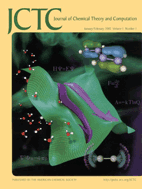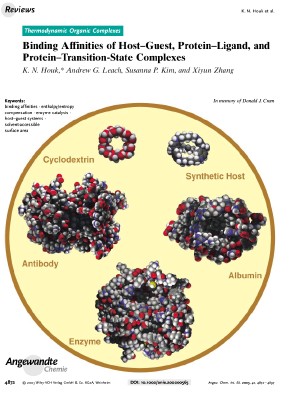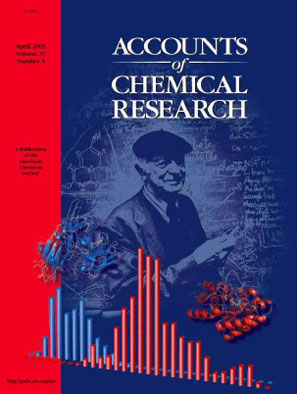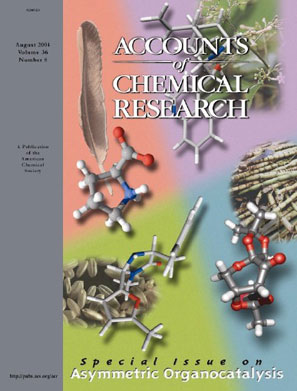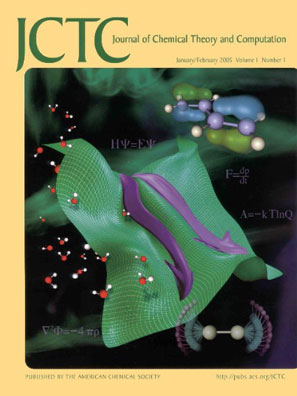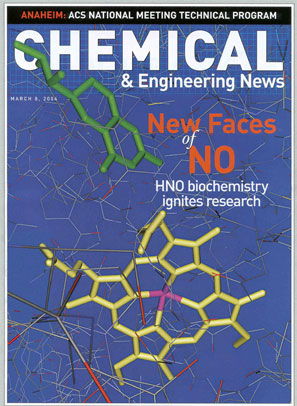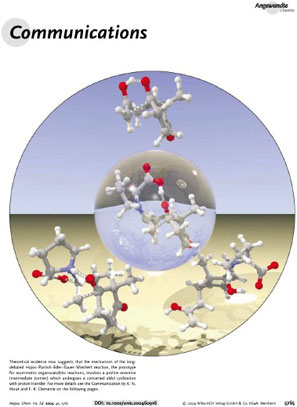|
Special Edition on Asymmetric Organocatalysis.
Guest editors in this number Kendall N. Houk (University of California,
Los Angeles) and Benjamin List (Max-Planck-Institut fur Kohlenforschung, Mulheim).
On the cover: Four of the prominent organocatalysts described in this
issue superimposed over the natural sources or the chiral compounds or
precursors. Clockwise from the top left are proline and chicken feather,
cinchoinidine and the cinchona flower, Shi's fructose-based catalyst and
sugar cane, and a MacMillan organocatalyst and rice hulls (a source of
phenylalanine). Cover concept and design by Ruth Gordillo (postdoctoral
researcher at Professor Houk's group) and Amy Meyer Phifer (graphic designer).
In recent years, catalytic methods based on metal-free organic
molecules have experienced a spectacular advancement. Relatively simple
organic molecules can be highly effective and remarkably enantioselective
catalysts of a wide range of important transformations.
Preparative advantages are notable: usually the reactions can be
performed under an aerobic atmosphere with wet solvents. The catalysts
are inexpensive and they are often more stable than enzymes or other
bioorganic catalysts. This issue contains a remarkable number of papers
that have been categorized according to a mechanistic classification,
where the catalysts are either Lewis acid, Lewis bases, Bronsted acids, or
Bronsted bases.
|

